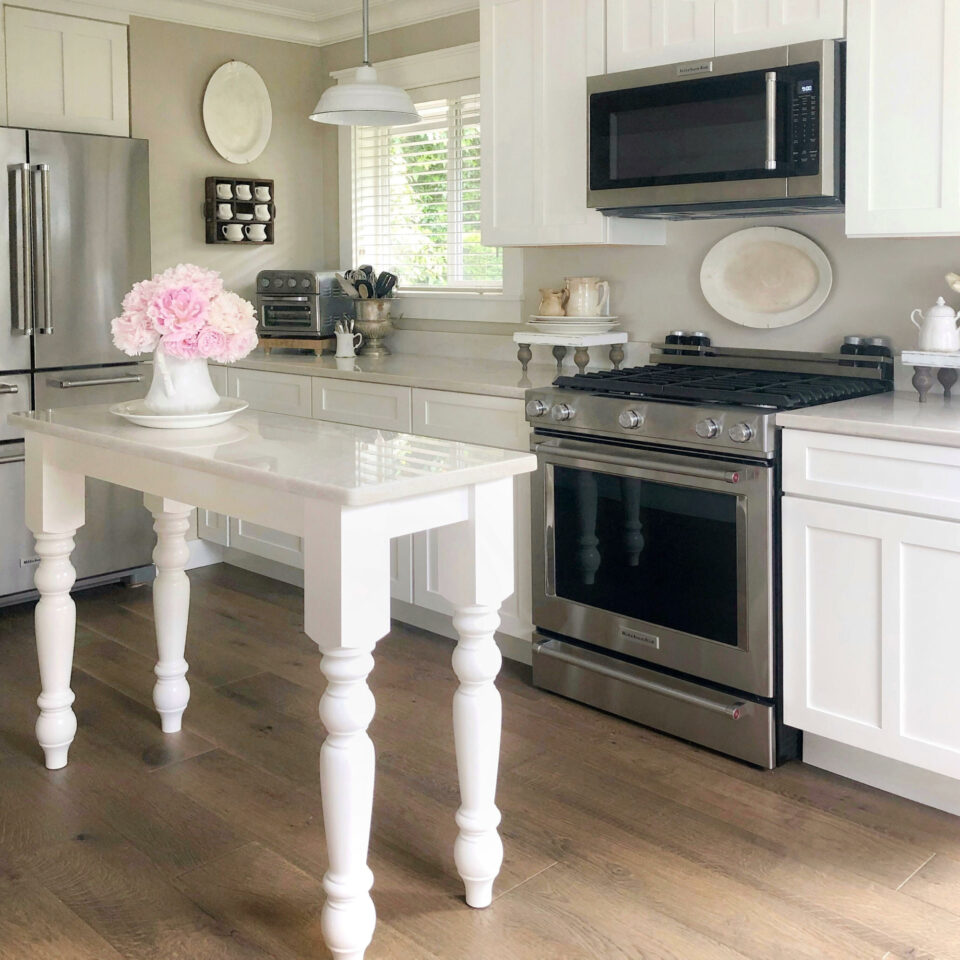Kitchen Island Legs for Modern and Classic Kitchens
Kitchen Island Legs for Modern and Classic Kitchens
Blog Article
Essential Tips for Selecting the Perfect Table for Your Kitchen Area
Choosing the best eating table for your kitchen area is even more than just an issue of preference; it necessitates a thorough understanding of your area and requirements. The shape of the table plays a pivotal role; while rectangle-shaped tables fit bigger areas, round ones foster affection, and extendable alternatives provide adaptability. The table ought to integrate with your kitchen area's aesthetics and suit your family members comfortably.
Step Your Space
Selecting the suitable dining table starts with a meticulous analysis of your readily available room. This foundational action guarantees that the table not only fits comfortably within the room but likewise matches the total design and performance of your dining area. Begin by determining the dimensions of the space, taking into consideration entrances, windows, and any existing furnishings. This will aid you identify the maximum permitted size for your eating table.
Consider the circulation of activity around the table. It is necessary to leave appropriate room for chairs to be taken out and for individuals to relocate around the table without obstruction. A basic general rule is to allow at the very least 36 inches of clearance from the side of the table to the local wall surface or item of furnishings. This makes certain ease of gain access to and comfort during dishes.
Furthermore, consider the number of people you typically entertain and whether you need additional space for guests. Opting for an extendable table can provide versatility, enabling you to fit differing numbers of restaurants. By precisely determining your area, you prepared for picking an eating table that enhances both the appearances and capability of your eating area.
Select the Right Shape

On the other hand, round tables are excellent for smaller sized cooking areas or intimate celebrations, as they promote conversation by enabling everyone to deal with each various other. They likewise give a feeling of comfort and can fit well in tighter areas because of their absence of sharp edges. Oblong tables offer the very best of both worlds, combining the length of rectangle-shaped tables with the intimacy of rounded ones, making them functional for numerous setups.
Square tables are one more alternative, especially matched for square-shaped areas. They create a symmetrical and modern-day appearance, fostering an equal eating experience for all seated.
Material Factors To Consider
When selecting an eating table, material factors to consider are critical in identifying the table's sturdiness, upkeep needs, and total visual. Timber is a classic selection, providing timeless charm and effectiveness. Hardwoods like oak, Continued mahogany, and walnut are specifically sturdy, though they can be pricey. kitchen island legs. Softwoods, such as want, are more inexpensive yet may be vulnerable to scrapes and dents.
Glass-topped tables supply a contemporary, sleek look and can make an area show up larger due to their openness. They need constant cleaning to stop spots and finger prints. In addition, tempered glass is advised for its added stamina and security.

Last but not least, composite materials like MDF (Medium-Density Fiber board) or plywood are affordable alternatives. These materials can resemble the look of solid wood however might not offer the same longevity. They are usually much easier to clean but can be vulnerable to water damage otherwise properly secured.
Inevitably, the option of material should line up with your kitchen's style, your way of living needs, and your budget plan constraints. (kitchen island legs)
Seating Ability and Convenience
Exactly how do you figure out the appropriate seating ability and comfort for your eating table? For a household of 4, a blog here rectangle-shaped table of 48 inches long or a round table with a 48-inch diameter is generally sufficient.
The height of the table must preferably be around 30 inches, giving a well balanced ergonomic stance for seated diners. Chairs ought to have a seat elevation of 18 to 20 inches to guarantee a comfy eating stance.
Style and Aesthetics
Picking a dining table that fits your design and aesthetic appeal involves balancing personal preference with the existing design of your dining area. The eating table is typically the focal point of the cooking area, and its style must complement the overall style of the area. Whether your cooking area flaunts a modern-day, minimal look or a rustic, farmhouse appeal, the table you choose should balance with these aspects to develop a natural and welcoming ambience.
Think about products carefully; wood supplies an ageless appeal and can vary from abundant mahogany for a typical look to lighter oak for a modern feeling. Metal and glass tables, on the other hand, can introduce a sleek, commercial side to your cooking area. Don't neglect the table's form-- rectangle-shaped tables are traditional and functional, while round and oblong options can promote a more find intimate eating experience.
In addition, pay close attention to information and finishes. A troubled coating might include character and heat, whereas a shiny surface can add to a tidy, modern aesthetic. Inevitably, your dining table need to not only healthy effortlessly right into your kitchen area's style but also reflect your individual style, boosting the area both functionally and aesthetically.
Final Thought
In conclusion, selecting the optimal eating table for a kitchen demands cautious evaluation of room, form, product, seating capability, and visual harmony. Eventually, a well-chosen dining table cultivates a welcoming atmosphere and suits the home conveniently, thus enhancing the eating experience.

When selecting an eating table, material considerations are extremely important in figuring out the table's longevity, upkeep requirements, and total visual. For a household of four, a rectangular table of 48 inches long or a round table with a 48-inch size is generally adequate.
Don't overlook the table's shape-- rectangular tables are timeless and versatile, while round and oblong alternatives can promote an extra intimate dining experience. kitchen island legs.
Report this page